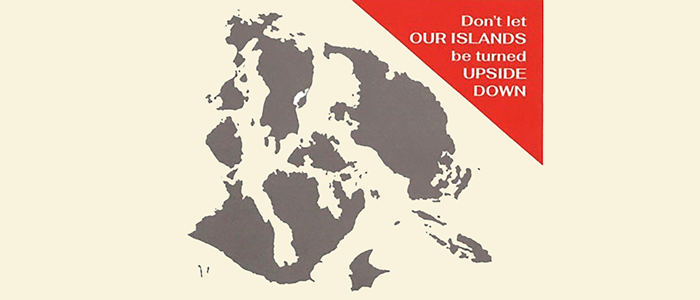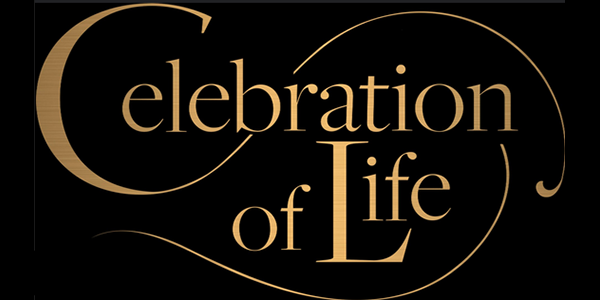||| FROM THE SALISH CURRENT |||
San Juan County’s Draft Destination Management Plan (DMP) became the target of anonymous opposition from “concerned citizens” last week when a postcard was mailed to all San Juan County postal patrons urging them to tell the county council to reject the plan.
The glossy card says “STOP San Juan Islands Destination Management Plan,” “No Land Grabs for Hiking Trails”, and “No Tax Stamps On Anything That Moves.”
A revenue-producing suggestion for a parking pass stood out as the most controversial of 87 proposed action items suggested as means of managing tourism.
Regional media got word of the proposal for the parking pass, and headlines described a different kind of planning effort altogether. Headlines such as, “Get ready to pay more to visit the San Juan Islands” (MYNorthwest) appeared — as if the proposal were already before the county’s legislative body.
The effort to establish a comprehensive approach to managing tourism shifted to focus on just one suggestion: “San Juan Islands asking public opinion on proposed tourism fee” (KIRO) and “San Juan Islands consider annual tourism fee for residents, visitors” (Seattle Times).
Not so fast
San Juan County’s communication coordinator Erin Wygant said on Thursday that she was not sure where that urgency came from. Wygant said there is “no established timeline for implementation of any of the proposals” nor any funding allocated in the County’s biennial budget for any of the proposals. “We were a little surprised that the focus was just on one suggestion,” she said.
The postcard estimated a cost of $700,300,000 for the plan, but “it’s unclear where that came from,” Wygant said. The cost estimated on page 85 of the draft plan document is $13,000,000 for both infrastructure and administration.
The county has described the revenue-generating proposal of a vehicle/boat/bicycle pass as similar to a Discover Pass: “We are exploring this as one of multiple options to find alternative funding … to address increasing pressure on our public infrastructure and implement necessary management strategies. This concept is suggested for further development and no decisions have been made.”
The process for developing the plan still has multiple steps to go though before any proposals are put before the county council. Public responses to the draft plan received by the public comment deadline of Oct. 31 will be analyzed, outreach to tribes will take place and more public input and public deliberations will occur, “if any further actions are developed,” Wygant said.
Managing tourism
Visitor traffic to the San Juan Islands has grown from approximately 17,000 annual visitors in the 1980s to an annualaverage of nearly 700,000 over the past five years, according to data provided by San Juan Islands Visitors’ Bureau visitor analytics and the Washington State Ferries.
“We were a little surprised that the focus was just on one suggestion.”
Negative impacts during peak season visitation, the plan notes, can produce traffic congestion and parking shortages, and a sense of crowding at beaches, boat harbors/moorings, trails and rural roads. The cooperative action component of the DMP proposes 87 actions that could be taken to address each of these impacts, including at specific locations.
Surveys done in 2019 by Confluence Research and Consulting showed that most residents already believe there is too much tourism. Respondents said the San Juan Islands are at (52%) or over (42%) capacity during peak summer season (94% taken together).
The DMP attempts to bridge the tension between tourist promotion and tourist management. The Visitor’s Bureau is tasked with tourism promotion, and expenditures of lodging tax revenues must generally be used for tourism promotion, acquisition of tourism-related facilities or operation of tourism-related facilities, according to the Municipal Research and Services Center.
San Juan County’s Destination Management Plan is managed as a “climate and sustainability” program under the county’s Department of Environmental Stewardship. Its stated intention is to “lighten the footprint of visitors and promote sustainable practices among local businesses.”
Locals react
Friday Harbor Rant and Rave, a closed Facebook group where locals express opinions, was active with comments on the destination plan during the past few weeks.
Responses to the parking pass included many like Gail Neely’s: “Charging people who already pay registration and taxes in this county to pay another fee to drive a car, ride a bicycle or sail a boat is wrong.”
Karin Roemer-Kleven commented “I’m all for charging tourists but residents that are here full time [and] have a bicycle and a car and a boat should not be charged extra as a resident user over and above they already pay (moorage fees for example).”
“I truly feel that this ‘tax’ is a slap in the face for residents — we have unusually high cost-of-living to begin with,” wrote Marie Johansen. “I am strongly against it. Fine, add the fee for tourists … but leave residents out of it!”
This planning effort has been underway since 2021 and builds upon past work in visitor and tourism planning surveys done in 2016–2020. It is a synthesis of ideas and suggestions to improve tourism management in the San Juans. Community engagement during 2022 included three community meetings that targeted residents, businesses and visitors.
In spite of these efforts to involve the public, there were reactions such as Patty Ryan Wickman’s: “Sadly, I have spoken to residents this week that hadn’t heard about the plan. Hopefully the mailing will spur more interest into it.”
Tookie Sandwith wrote, “That’s the very problem, nobody knows about this. When they find out, they’re not happy. Everybody needs to be informed to be able to make decisions.” [Ed.: Punctuation added.]
Laura McKee said, “Certainly now would be a good time to have a community planning group to move into the next steps, NOT just commenting on the Engage San Juan website.”
A letter by Gavin Guard circulating on Facebook is resonating with a number of locals: “I fear that this management plan (along with the proposed trail system) will ultimately contribute to more tourism on an already over-taxed infrastructure system.) The plan seems to prioritize short-term visitors over long-term locals. I think we can all agree that tourism is at the very heart of our economy. But there needs to exist a healthy balance — too little, and our economy suffers, too much and our community turns into another Martha’s Vineyard. If anything, tourism needs to slow down, not ramp up.”
Public comments on the Draft Destination Management Plan will be accepted through Oct. 31.
**If you are reading theOrcasonian for free, thank your fellow islanders. If you would like to support theOrcasonian CLICK HERE to set your modestly-priced, voluntary subscription. Otherwise, no worries; we’re happy to share with you.**









>> “The postcard estimated a cost of $700,300,000 for the plan, but “it’s unclear where that came from,” Wygant said.”
Dear Editor, that’s a typo — the postcard (sitting here on my desk) says $70,300,000.
But the postcard is also wrong. Page 85 of the draft plan says $13,016,000.
$13 million is still lot of cash, about $650 per islander (based on estimated county population of 20,000).
Why should every resident be paying $650 to build new campgrounds for tourists, bike lanes for tourists, bogus “eco-certification programs” for tourism businesses, and off-season marketing to bring even more tourists to our shores?
Everyone who reads this should email tourism@sanjuanco.com and Cindy Wolf (cindyw@sanjuanco.com) and say NO to this cash grab. What almost every person I talk to wants is a plan to REDUCE — not increase — the number of tourists!
As we all know one of the oldest strategies in politics performed in an effort to get needed/wanted information, (or “misinformation”) out to the public is to start a leak to a complicit media source, which, once leaked, can then be quickly followed up on by various other MSN sources in an effort to create the framing of the issue around the status quo line, whatever that may be, (”Sources say the Russian’s did it,” “Anonymous sources share leaked document,” etc.). We’ve all seen this happen.
I knew that this is what had happened recently when the Seattle Times came out with their 10/24 article, “San Juan Islands consider annual tourism fee for residents, visitors.”
Today, in reading one of the recent past V.B. semi-annual Destination Marketing and Management reports I noticed where the V.B. clearly spells out that one of their marketing strategies is, “Media Leads.”
“Media Leads – We responded to and/or shared 35 significant media leads with…,” (and they go on to list the 35 stories alluded to for the year 2020, including stories that were posted in the Seattle Times). 2020 Semi-Annual Destination Marketing & Management Report https://www.visitsanjuans.com/2020-sjis-visitors-bureau-semi-annual-report.pdf
The employment of this strategy, (of “leaking,” or “leading” to the media) is described perfectly by the timing of the 10/24 Seattle Times story “San Juan Islands consider annual tourism fee for residents, visitors,” and then the subsequent articles that were featured by the KIRO News Team (also on 10/24), MyNorthwest (also on 10/24), and then the follow up story by Nancy Deveaux Salish Current (10/29), see below. Each of these stories include links to the DMPs public comments, with the KIRO 7 News Team (see below) even going so far as to actually state, “You are encouraged to express your thoughts by making a comment on San Juan County’s website.” This is too obvious to be a coincidence.
And why would our Visitors Bureau do this? The answer is clear. Tourist studies show that small $10 – $15 “tourist fees” that are enacted by cities, parks, and countries are normally well-received by tourists. In light of this, and in light of how many negative comments the V.B. are getting on the proposed DMP, (and mostly because of the proposed $10 – $15 fee), it becomes obvious that the Visitors Bureau leaked this story to outside news sources as a strategy designed to increase the number of positive comments in regards to the DMP.
The bigger issue is, of course, why are we allowing outside influence in San Juan County politics? I don’t go out of my way to vote in the politics concerning Twisp, or Winthrop, or Leavenworth, or Chelan… it’s none of my business. I’m sure many would agree with me that there needs to be a line drawn and that this is a dangerous precedent to set, both for now, and into the future.
Outside influence has no place in San Juan County politics. It’s one thing to host a survey that includes the tourist’s views, but this is taking it to an altogether different, and what I believe is, dangerous level.
FWIW, MJ
First–
Seattle Times (Vonnai Phair) 10/24/23– San Juan Islands consider annual tourism fee for residents, visitors
https://www.seattletimes.com/seattle-news/san-juan-islands-consider-annual-tourism-fee-for-residents-visitors/fee
Then–
MyNorthwest 10/24/23– Get ready to pay more to visit the San Juan Islands https://mynorthwest.com/3936453/get-ready-pay-more-visit-san-juan-islands/
Then–
KIRO 7 News Staff 10/24/23– San Juan Islands asking public opinion on proposed tourism fee
SAN JUAN COUNTY, Wash. — People visiting the San Juan Islands may soon be paying a tourism fee. The $10 to $15 fee would be for bikers, drivers, and boaters who are visiting the islands. Both residents and visitors would be required to purchase the passes each year.
Officials say the money would go toward management and infrastructure improvements.
San Juan County is currently considering public opinions both for and against the fee.
You are encouraged to express your thoughts by making a comment on San Juan County’s website.
Public comment will close at the end of October.
https://www.kiro7.com/news/local/san-juan-islands-asking-public-opinion-proposed-tourism-fee/BFFLX2TRCVDVBJ5RVPGQ4T6C7A/
David Bowman, bike lanes are for everybody; residents sorely need them too! In fact, all the surveys listed bike lanes as one of the highest priorities. The sooner we get them, the sooner drivers will stop complaining.
From my comments in relation to the DMP–
Using LTAC funds to promote solar & other types of greenhouse gas reducing alternative energy related infrastructure (like solar panels for public buildings, and E-vehicle charging stations), would be a very proactive way to use some of the funds that are normally used to over-promote the islands. I would also go so far as to say that I’d be amenable to having the LTAC funds even pay for the bicycle lanes that we need alongside our roadways, as long as their paid for with LTAC funds, and the county puts a limit on the size and number of bike groups that can visit the islands annually, (limits that are in line with the results of future studies relative to capacity).
It’s also encouraging to see the use of LTAC funds being put towards some of the capital improvements that are outlined within the DMP.
In relation to this, I must say that SJCs continued posturing when they state these capital improvements are improvements that will “benefit the residents of SJC as well as the tourists” seems a bit lacking… it’s not really an analysis that goes full-circle. I mean while you’re stating “it’s for us,” it doesn’t escape us that the amenities and infrastructure that you want to build isn’t just for us, it’s for us and for the 1,000,000 plus tourists that come here every year. Creating amenities for and building the infrastructure to accommodate 18,000 (mostly retirement-aged) residents, and over 1,000,000 annual tourists doesn’t quite equal out. In light of this I encourage SJC to continue using the LTAC funds, and in doing so ask that you use the funds that would normally be used for tourism promotion in an effort to help complete the DMP, and for use in maintaining the existing infrastructure that we have in SJC now, and to increasingly invest in eco-friendly, green and sustainable, carbon reducing policies outlined by standards crafted by our own Environmental Stewardship Team.
Bike lanes badly needed. Parking too, but Island residents should not be have to for tourists. It’s already too expensive to live here. Knock that right out any plan you conceive of.
Though one would think the Visitors Bureau could clearly answer the question at hand, the $70M price tag referred to in the mail-out that the San Juan County’s communication coordinator Erin Wygant said, “it’s unclear where that came from,” would be combining the costs associated with both the $13M+ costs on P-85 of the DMP, plus costs that are related to improvements in the Ross Plan (one of the appendices that’s attached to the current draft DMP), in relation to their 6 yr. action plan, (a plan proposed mostly to see what grants are out there that they might be able to take advantage of). A lot of the costs associated within the plan includes costs associated with land purchases by the Land Bank, with none of these proposed action items being on schedule to actually be accomplished at this time.
Ross Plan– IMPLEMENTATION PLAN The Implementation Plan presented below proposes over $51 million total in projects for the next six years, including $50 million in capital projects and $1.4 million in non-capital projects. Land acquisition projects led by the Land Bank account for $25 million of this total, while the remainder includes development and renovation projects primarily led by San Juan County Parks, Environmental Stewardship, and Public Works.
Where does one draw the line in relation to the amount of amenities and infrastructure that’s really needed and for the costs associated with being an eco-niche resort destination? Should the citizens of SJC have to pay for amenities that are designed to bring more tourism to the San Juans?
I like how Mr. Hooper so eloquently worded it in his response to the same question when he stated, “Knock that right out any plan you conceive of.”
Mr. Hooper and MJ, parking and bike lanes are not for tourists, they are for us. Remember that next summer when you’re stuck behind a cyclist or looking for a parking spot in town. The Visitors Bureau needs to stop promoting tourism and we need to make our county roads toll roads, with residents and workers being exempt.